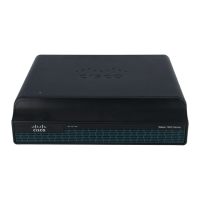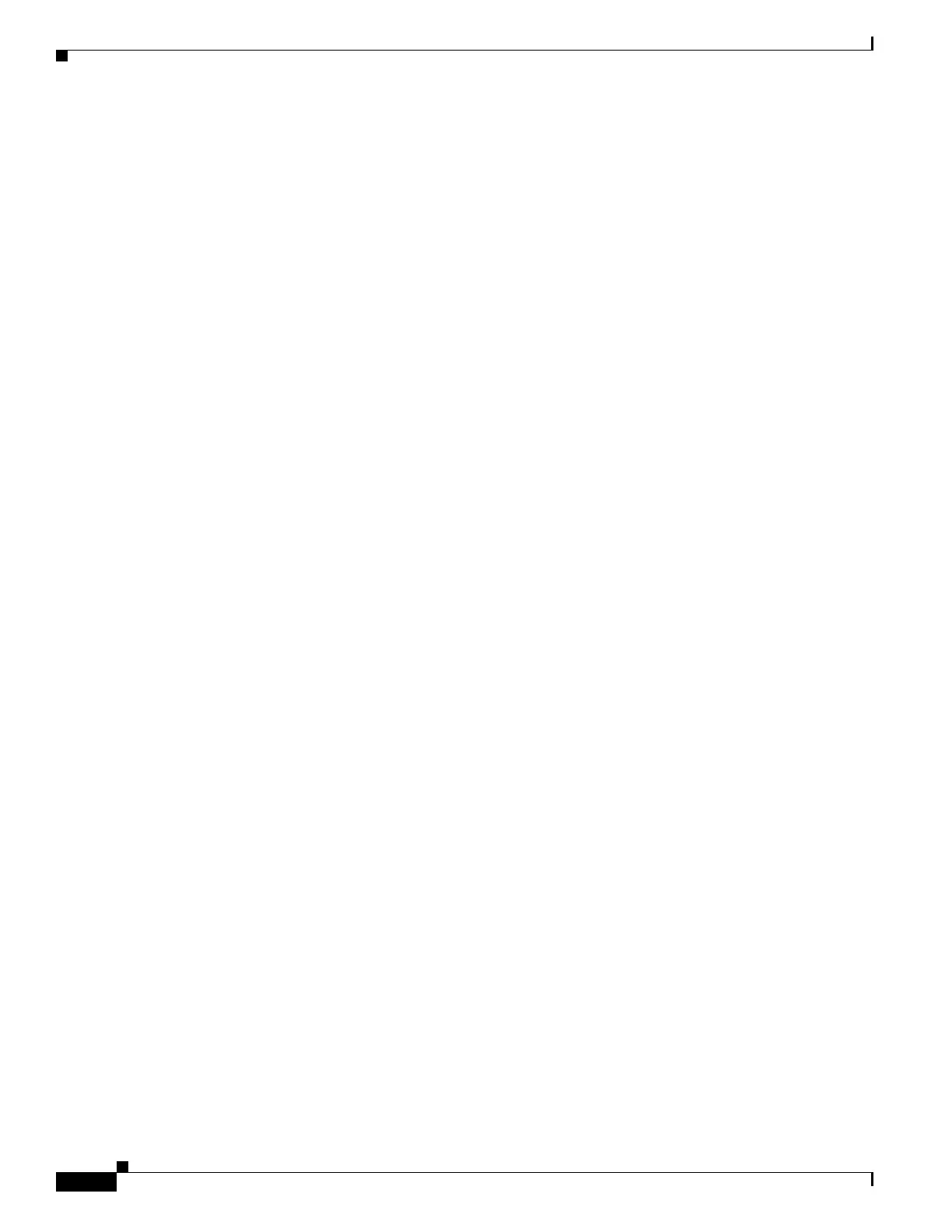278
Cisco 3900 Series, Cisco 2900 Series, and Cisco 1900 Series Integrated Services Routers Generation 2 Software Configuration Guide
Chapter Configuring Radio Settings
Configuring Radio Channel Settings
Blocking Channels from DFS Selection
If your regulatory domain limits the channels that you can use in specific locations—for example,
indoors or outdoors—you can block groups of channels to prevent the access point from selecting them
when DFS is enabled. Use this configuration interface command to block groups of channels from DFS
selection:
[no] dfs band [1] [2] [3] [4] block
The 1, 2, 3, and 4 options designate blocks of channels:
• 1—Specifies frequencies 5.150 to 5.250 GHz. This group of frequencies is also known as the UNII-1
band.
• 2—Specifies frequencies 5.250 to 5.350 GHz. This group of frequencies is also known as the UNII-2
band.
• 3—Specifies frequencies 5.470 to 5.725 GHz.
• 4—Specifies frequencies 5.725 to 5.825 GHz. This group of frequencies is also known as the UNII-3
band.
This example shows how to prevent the access point from selecting frequencies 5.150 to 5.350 GHz
during DFS:
ap(config-if)# dfs band 1 2 block
This example shows how to unblock frequencies 5.150 to 5.350 for DFS:
ap(config-if)# no dfs band 1 2 block
This example shows how to unblock all frequencies for DFS:
ap(config-if)# no dfs band block
Simulating Radar Detection
You can simulate radar detection on the current channel using the debug dot11 dfs simulate command.
The following example simulates radar on dfs channel 36. Five beacons are sent.
ap>enable
Password:
ap#debug dot11 dot11radio1 dfs simulate 36 5
The following is an example message displayed on the console when radar is detected:
*Mar 6 12:35:09.750: %DOG11-6-DFS_TRIGGERED: DFS: triggered on frequency 5500 MHz

